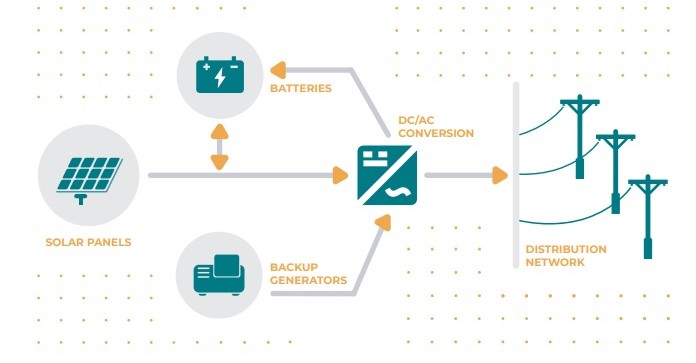Smart Power India, a subsidiary of Rockefeller Foundation, has launched its Technical Monitoring Guide for Solar Hybrid Mini-grids in India.
The past decade has witnessed great interest in mini-grids as a potentially transformative solution to last-mile energy access in the developing world. Mini-grid operating models and technologies continue to evolve with a dynamic customer base. The guide seeks to provide standard protocols for measuring, analyzing, and interpreting the performance of mini-grid plants and their key components.
Link to the Technical Guide: https://smartpowerindia.org/pdf/techinical-guide-10th-sept-low-res.pdf
“We foresee every step of monitoring becoming increasingly streamlined: from data collection, to benchmarking, to interpretation, and hence to confident prescription of interventions which will improve and safeguard performance,” notes Mukherji.
The Guide seeks to support the knowledge base of various stakeholders in the broader mini-grid ecosystem, including technical services companies, equipment manufacturers, regulators, and investors. Currently, in the absence of any standard established monitoring framework, new entrants to the sector are forced to commit to a period of experimentation in how to track and manage performance. This leads to cost inefficiencies and mistreatment of equipment. This guide helps mini-grid developers avoid elementary pitfalls, providing a foundation that can be built upon and adapted as they gain more experience in the capabilities and requirements of the equipment on the market.
The mini-grid sector as a whole has now developed to the point where routine technical audits and monitoring are indispensable for both aging and newly-built plants.
Mini-grid plant monitoring consists of three complementary activities.
Technical Audit: A deep and thorough evaluation of plant equipment, architecture, and operations requiring a visit from a specialized audit team. A technical audit provides a detailed snapshot of the plant at a given point in time, providing a baseline for future investigations. Italso outlines corrective measures and projects future performance.
Routine Monitoring: Local mini-grid field personnel need to monitor the plant components. These activities maintain a proactive and continuous understanding of plant behavior and give opportunity for swift intervention before incipient problems escalate
Remote Technical Assessment: The tracking of specific technical indicators to reveal longer-term trends in the performance of mini-grids is critical. With remote data collection from in-plant sensors and automated analysis on cloud servers, these key indicators give continuous comparative insight into whether a plant is meeting expected performance.
This guide lays foundations for development and implementation of a variety of assessment approaches.
The mini-grid sector as a whole has now developed to the point where routine technical audits and monitoring are indispensable for both aging and newly-built plants. The root causes of underperformance can in some cases be revealed through a single approach alone, but typically insights from all three must be combined to arrive at a complete picture. Once underlying issues have been identified, short- and long-term solutions can be devised; weighing the benefits and costs of these, plant management can optimally allocate their resources in correcting the performance of existing plants and revising the design of new builds
This guide lays foundations for development and implementation of a variety of assessment approaches. Mini-grid technologies continue to mature, and the range and quality of sector specific services continue to improve, making valuable contributions for the development of the sector.
(Featured photograph, showing schematic representation of a mini-grid, has been extracted from Smart Power India’s Technical Monitoring Guide for Solar Hybrid Mini-grids in India.)

